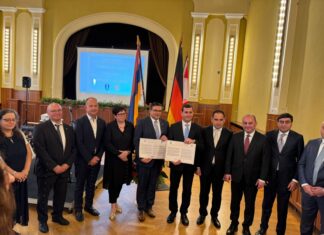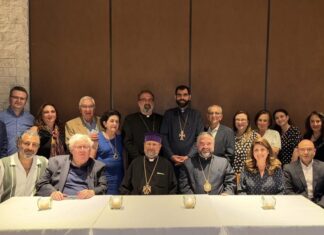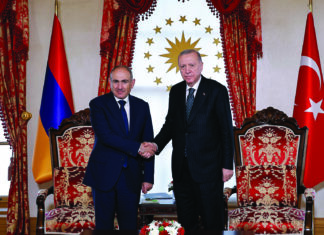By Raffi Bedrosyan
November 11 is known as the Remembrance Day in the US, Canada and other allied nations, a day to honor and remember the soldiers who died during the service to their country, starting from World War I. But Armenians and other minorities in Turkey remember November 11 as the day of legalized robbery and forced bankruptcy by the Turkish government during World War II.
The Wealth Tax legislation was passed on November 11, 1942, imposing arbitrary, unbearable taxes on Armenians, Greeks and Jews living in Turkey, not based on their income but on their known or ‘imagined’ assets. The result was economic destruction of the remaining minorities in Turkey and complete transfer of wealth, production and economic activity from the minorities to the Turks, effectively ‘nationalization of the economy’. This article provides a summary of the events surrounding the legislation, making use of memoirs of some Armenian families who suffered the consequences, as well as articles written by Turkish sources such as investigative author and historian Sait Cetinoglu and Istanbul Tax Office accountant at the time, one of the implementors of the legislation, Faik Okte.
The justification for the wealth tax was to prevent profiteering and black-market riches created during the war conditions. For a few months before the legislation, the Turkish media continuously published articles of wealthy minority opportunists and caricatures of ‘black market Jews’. But the government saw this situation as an opportunity to ‘eliminate’ minorities from the economy. The Prime Minister Sukru Saracoglu explained the government policy in a speech in August 1942: ‘We are Turks and Turkists forever. We do not wish for the dominance of any palace, class or capital, we just want to ensure the dominance of the Turkish nation’. The legislation proposed to tax people based on their ethnic identity and religion. People were labelled Moslem, Non-Moslem and Converted (Donme). Donme people were Jews, mostly from Thessaloniki, who had converted to Moslem Turks. The non-Moslems were further classified as Armenian, Greek and Jewish, and taxed according to their ethnicity. Armenians were taxed the most, at 232 percent of their assessed wealth, Jews at 179 percent, Greeks at 156 percent and Moslem Turks only at 4.94 percent. Faik Okte writes that some Turks rejoiced, thanked God and sacrificed animals upon hearing the low tax percentage for them, which also meant that they would be able to buy the assets of the non-Moslems at auctions at ridiculously low prices.
The wealth tax legislation was passed in the Parliament on November 11, 1942, without any debate. It proposed to establish tax assessment commissions, members of which were all Turks, mostly businessmen and merchants competing with the Armenian, Jewish and Greeks, obviously to benefit the most from the bankruptcy of the minorities. There could be no objection or appeal to the assessed tax, with a deadline of 15 days to pay the assessed tax in cash. At the end of 15 days, the remaining assets of the persons incapable of paying the assessed tax would be auctioned off for non-payment, and the person would be sent to labor camps in eastern Turkey in order “to pay his debt by physically working.” These labor camps were established for road, railroad and tunnel construction projects, by breaking stones from rocky mountains under deplorable working and living conditions, sleeping in tents in freezing weather, with minimal food and water.
The tax assessment commissions finished their work by December 1942. About 87 percent of the assessed taxes were for non-Moslems, 7 percent for Moslem Turks and the remaining 6 percent for non-citizen foreigners. There are anecdotes of tax assessment commission members deciding the fate of Armenian and Greeks by flipping coins, to insert how many zeros on their assets and wealth taxes. Some of these commission members were known for their hatred for Armenians, who were the children of the Armenian Genocide perpetrators, continuing the destruction of the remaining Armenians. During January 1943, thousands of real estate, houses, shops, flats, apartment buildings, factories, machinery and equipment changed hands from Armenians, Greeks and Jews to Turks and Turkish institutions. About 67 percent of the real estate were grabbed by Turks, and 30 percent by the Turkish state. Most of the valuable real estate, designed and built by Armenian and Greek architects and owned by minorities on the main thoroughfare of Istiklal Caddesi, formerly Rue du Pera, changed ownership during this time.








